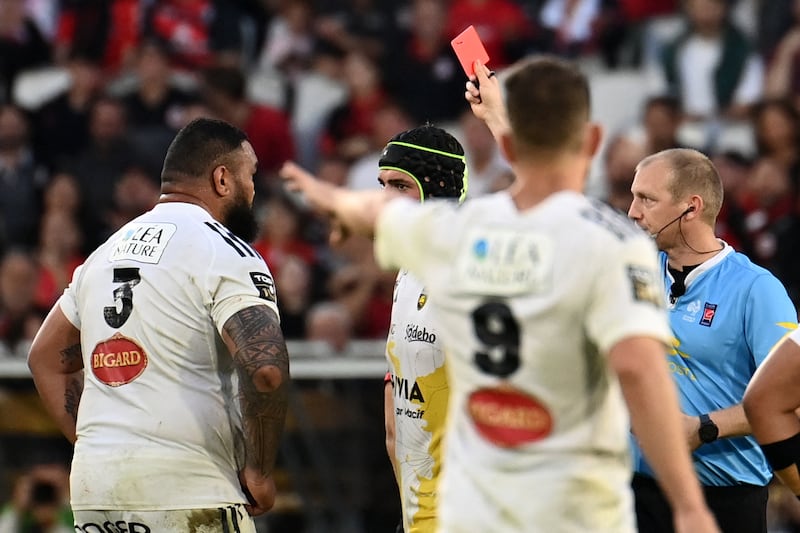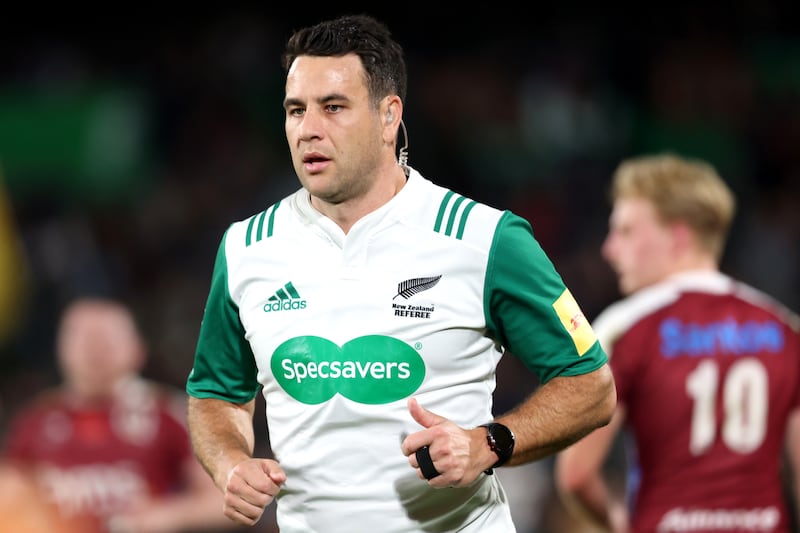“I’m old school, a red card should have a big influence on a match.”
Whenever Ronan O’Gara speaks, he gets me thinking.
La Rochelle have nothing but cards to display in their otherwise empty trophy cabinet. A season of ill-discipline took its toll. Two reds, in their Top 14 semi-final defeat, were added to that not so glittering collection.
With Toulouse on the ropes, the final beckoned. But La Rochelle contrived to press the self-destruct button, blowing a golden opportunity to win the cherished Bouclier de Brennus for the first time.
READ MORE
However, it does make ROG’s opinion, in the 20-minute replacement debate, all the more relevant.
World Rugby’s specialist working group, tasked with studying the problem, are undoubtedly beavering away, amassing and assessing all the intel available. There will be more for them to consider over the coming months as they start to formulate their recommendation for November’s council meeting.

There is some chat of a political compromise, an additional card allowing a replacement for Sam Cane-like incidents in the World Cup final. The no-replacement full red would remain for heinous dangerous play, such as we saw with the flying hit on Jamison Gibson-Park in Leinster’s recent defeat to the Bulls. One problem with it is that the level, and definition, of a heinous crime would be very hard to agree. And please, not another protocol, use the laws.
There are also side issues which should be addressed. It was bad enough that the four match officials failed miserably to review the Gibson-Park incident, but insult was added to injury when the citing commissioner went AWOL. It really needed to go to the judiciary for consideration. A back-up system is essential, a double check, which ensures that foul play, incorrectly not cited, can still be covered.
Maybe the commissioner convinced himself that the hit was below the nape of the neck. I’d argue that, and also ask so what? There are dangerous tackles which are not covered by the head contact protocol, now used for most everything, while the actual laws of the game are ignored.
These laws are simple, and crystal clear. They inform us that dangerous tackling is not limited to tackles which are above the line of the shoulders, and that players must not do anything which is dangerous or reckless to others.
A couple of examples. Tom Lynagh playing for Queensland Reds received a very late, headlong, no-bind, shoulder-led hit from the Chiefs’ Samipeni Finau. Lynagh’s head whiplashed violently before hitting the deck.
We can imagine that nothing good was happening to his brain while that was going on. The point of the collision was to the sternum, which is not too far away from the heart. Lynagh weighs 83 kgs, Finau 115 kgs. Students of Newton’s laws of physics will no doubt work out the mighty force involved.
Referee Ben O’Keefe was in charge. He decided that a ‘penalty only’ decision was quite enough. “No head contact,” he said.
I’d seriously dispute that call. Lynagh left the field, the episode confirming a major worry about the red card replacement – that playing with 14 men for 20 minutes is a very soft price to pay for removing a key opposition playmaker.

Lynagh shows qualities which were often seen in the wonderful performances of his father, Michael, remembered for his last-minute winning try at the old Lansdowne Road in the 1991 Rugby World Cup. Lynagh dotted down outside the then Wanderers FC clubhouse, having miraculously picked up the ball at bootlace height when David Campese was tackled just short. All we could hear was the sound of silence echoing around the old ground, Irish dreams turned into nightmares in an instant.
Next to an Under-18 level schools match. A high ball was caught in midfield. The catcher then turned his back to the chasing opposition so he could pass to a supporting runner. He was standing still when an opponent’s shoulder crashed into his spinal column.
It was as nasty as it was unnecessary, and the referee just played-on – he was only doing what he sees at the highest levels. World Rugby would do well to remind us that the law must be applied to all forms of dangerous tackling, not just those involving head collisions.
These are not frequent occurrences, but when they do happen referee judgement is necessary. That is why rugby has laws, not rules, which are hard and fast. The head contact protocol is a rigid step-by-step tool which, nonetheless, still sees disagreement over its application. There will be disagreements too with judgements, but at the end of the day that’s the referees’ job. They are supposed to be a lot more than protocol processors.
The bottom line must be that these two examples, or their ilk, cannot be placed outside red card territory just because there is no head collision. If the referee had red carded Finau, he should only have been applauded. But, no doubt, he would have been subjected to the inevitable abuse from those who believe that these hits are all part of the game. They are not, and never were.
We need to move away from the complete non sequitur that when there is no direct head collision in a tackle, there is no red card foul play. That, as a guiding principle, is nonsense. Old school, or new.
















